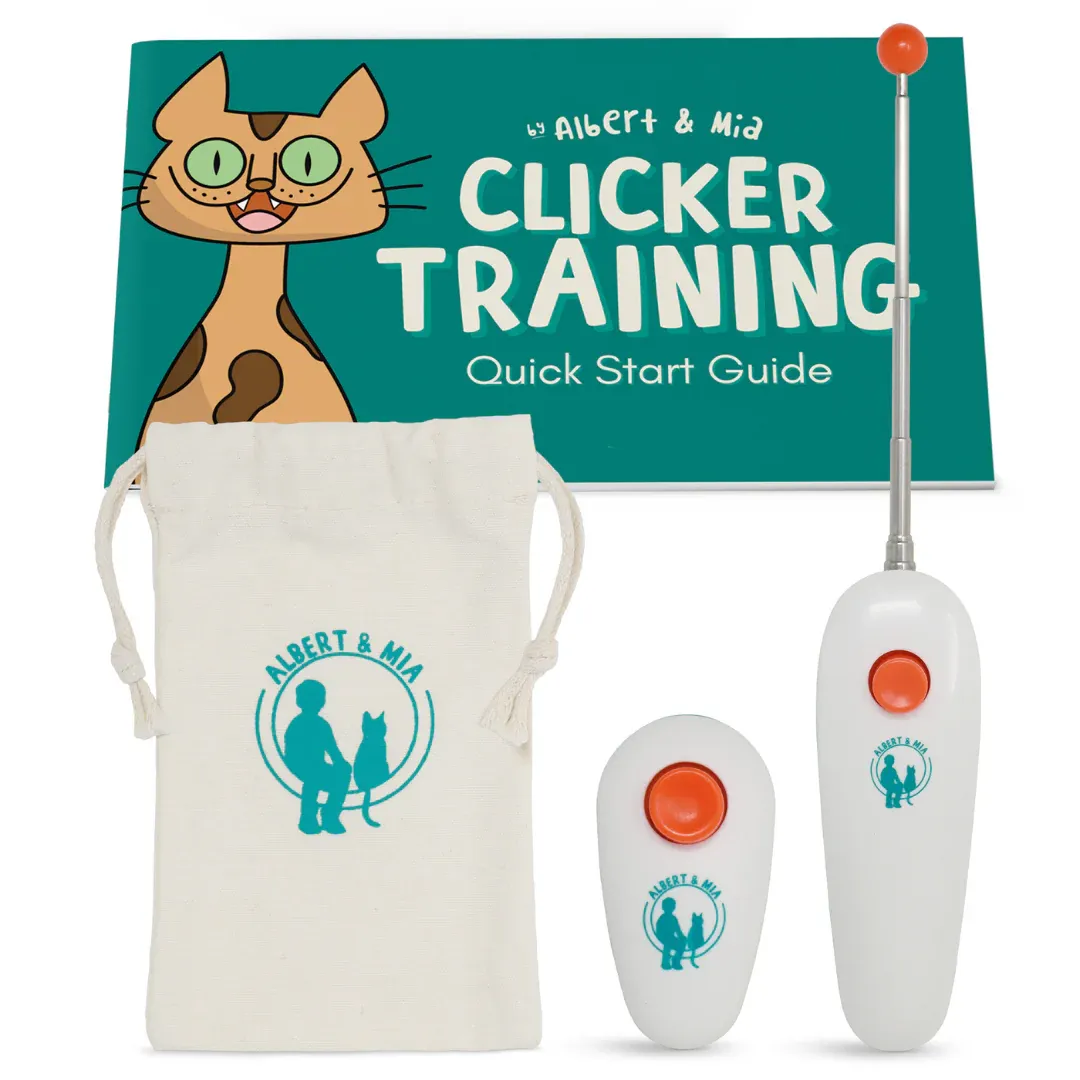Did you know your cat can learn to high-five just like a dog? Cats are incredibly intelligent and capable of mastering fun tricks, including the high five, which is one of the simplest and most impressive to teach. Whether you’re a new cat owner or looking to bond more with your feline friend, how to train my cat to sit and similar basics pave the way for advanced moves like this. In this guide, we’ll walk you through clicker training basics and the exact three steps to teach your cat to high five, helping you create memorable moments with guests or on video.
Clicker training isn’t just for dogs—it’s a proven method that uses positive reinforcement to encourage desired behaviors in cats. By associating a distinct “click” sound with treats, your cat quickly learns what earns rewards. This approach builds confidence, reduces stress, and provides mental stimulation far better than toys alone. According to veterinary behaviorists, enrichment like trick training prevents boredom-related issues such as destructive scratching or excessive meowing.
What Is Clicker Training and Why Use It for Cats?
Clicker training is a form of operant conditioning where you “mark” the exact moment your cat performs a wanted behavior with a clicker sound, followed immediately by a treat. This precise timing helps cats understand exactly what they did right, making learning faster and more reliable than verbal praise alone.
Think of the clicker like a camera snapshot: you click when you “capture” a behavior you love, such as your cat lifting a paw. Cats respond well because the sound is consistent, distinct, and non-emotional—unlike praise, which can vary in tone. Studies from animal behavior experts, including those referenced by the American Association of Feline Practitioners (AAFP), show clicker training improves focus and strengthens the human-cat bond.
No clicker? Use a consistent word like “Yes!” in a sharp, upbeat tone. However, a dedicated clicker (available for under $5 online) is ideal for its clarity. For indoor sessions, opt for a quiet clicker to avoid startling sensitive cats.
Charging the Clicker: The Essential First Step
Before teaching any trick, “charge” the clicker by pairing the sound with rewards repeatedly. Sit with your cat in a quiet room, click once, then immediately offer a small treat. Repeat 10-20 times per session, 2-3 times a day.
Watch for the “aha” moment: your cat perks up, looks expectant, or approaches eagerly after a click. This usually takes 5-10 minutes total. Once charged, the click alone motivates your cat, bridging the gap to the treat.
Common question: Is a clicker necessary? Not strictly, but it’s highly effective. Noisy household environments can dilute verbal markers, while a clicker’s uniqueness shines through. As experienced trainers note from platforms like the Cat Writers’ Association, consistency accelerates results.
 Clicker Training Starter Kit
Clicker Training Starter Kit
Teaching Your Cat to High Five in 3 Simple Steps
Ready to dive in? Assume your clicker is charged and you have high-value treats (like freeze-dried chicken or tuna bits—tiny pieces the size of a pea to avoid overfeeding). Sessions should last 5-10 minutes to keep your cat engaged. High fives work best with cats who already know basic sits, but even novices can learn quickly.
Step 1: Get Your Cat into a Sitting Position
Start with your cat on the floor. Lure them into a sit using a treat above their nose, or if they know the cue, command “sit.” Praise and treat any sit attempts to reinforce it. Can you teach a cat to sit? Absolutely—it’s the foundation for paw lifts.
A stable sit prevents jumping and focuses energy on the paw. Practice this for 1-2 sessions if needed; most cats pick it up in days.
Step 2: Lure the Paw Touch with a Treat
With your cat sitting, hold a treat in the center of your open palm at paw height. Use your other hand’s index finger to point at it enticingly. As soon as their paw lifts off the ground toward your hand—even if it doesn’t fully touch—click and reward.
Say “High five!” cheerfully each time. Repeat 5-10 times per session. Gradually raise your hand higher; your cat will stretch to touch. This step builds the motion reflex. Pro tip: If your cat paws aggressively, lower the treat and reward gentler touches to shape softer high fives.
Can you train cats to stay off counters? The same luring technique applies here, showing versatility in clicker methods.
Step 3: Fade the Lure and Add the Verbal Cue
Remove the treat from your palm but keep pointing with your index finger and saying “High five!” as you raise your empty hand. Click and treat from your other hand the instant the paw touches.
After 10-20 reps, drop the finger point entirely. Offer your hand palm-up at head height and cue “High five!” Your cat should now paw it reliably. Practice in different rooms and with visitors for generalization.
For stubborn cats, return to Step 2 briefly. Videos from certified trainers demonstrate variations, like fist bumps. Always end sessions on a success to build enthusiasm.
How to get a cat to use a cat house explores similar shaping for comfort zones.
Final Tips for Successful Clicker Training Sessions
Use micro-treats to extend sessions—cats have walnut-sized stomachs, so overfeeding kills motivation. If the clicker sound scares your cat, muffle it behind your back initially or use a softer marker.
Avoid these pitfalls: timing clicks too late, inconsistent rewards, or long sessions. Experienced cat parents report 3x faster progress by following do’s (precise timing, high-value rewards) and don’ts (punishment, distractions).
For more enrichment, explore how to stop puppy barking at cat if multi-pet homes apply, adapting inter-species cues.
Mastering high fives boosts your cat’s confidence and your skills. Consult a vet for health checks before intensive training, especially for seniors or kittens. With patience, you’ll have a high-fiving pro in weeks—perfect for social media or family fun. Share your success stories and check our other cat training guides for endless adventures!
